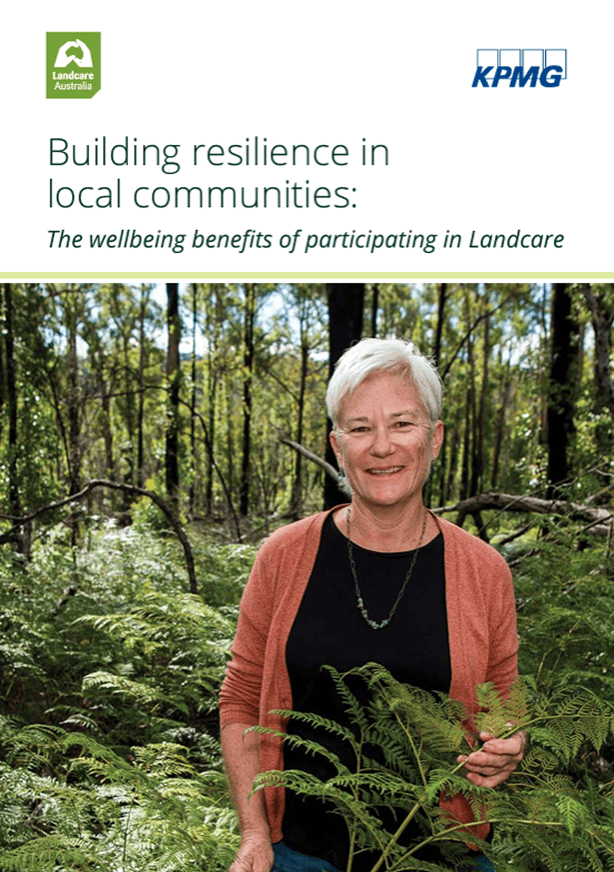The wellbeing benefits of participating in landcare
For decades, landcarers have reported feeling better physically and mentally, thanks to a stronger connection with their community and environment. Landcare Australia and the landcare movement have long desired to quantify the significance of these benefits, and with the support of KPMG Australia, a ‘landcare wellbeing’ report was published in 2021 – Building resilience in local communities: The wellbeing benefits of participating in Landcare

Published in 2021, the findings by KPMG Australia in partnership with Landcare Australia, indicate Landcare volunteers enjoy substantial improvements to their mental and physical wellbeing – with a significant decrease to their healthcare costs.
Healthcare cost savings
Surveying more than 1,000 Landcare volunteers and coordinators from the landcare community along with focus group interviews, the findings in the report, titled Building resilience in local communities: The wellbeing benefits of participating in Landcare suggest substantial improvements in wellbeing owing to involvement in landcare. The report also revealed that involvement in landcare had led to approximate savings from avoided healthcare costs of $403 per individual per year. For the landcare movement which exceeds 150,000 individuals, that number equates to $57 million nationally.
Productivity improvements
The report also goes on to address additional savings to the landcare volunteer community relating to productivity, and benefits owing to natural disaster resilience and recovery, with the combined value amounting to $191 million annually.

Read the Report & Share
This report has been developed for the use of individuals, groups and organisation involved in landcare activities. We invite you to please download the report and share with your networks.
Key Report Facts
See graphic of the wellbeing benefits of participating in landcare.
Mental resilience
46 per cent of survey respondents reported an improvement in their mental resilience.
Healthcare cost
Avoided healthcare cost us $57 million for the estimated landcare population (or $403 per landcarer).
Productivity
Improved productivity is $97 million for the same population (or $487 per landcarer).
Individual economic benefit
With health benefits, productivity and disaster resilience taken into consideration, there is a $1,347 per person per year economic benefit from participation in landcare.
Nationwide economic benefit
When applied to the entire estimated landcare population that generates a total economic benefit of over $191 million dollars per year.
Connection to the land
93 per cent report a stronger connection to the land.
Connection to the community
90 per cent experiencing a stronger connection to the community.
Physical health services
19 per cent reported a reduced use of physical health services.
Mental wellbeing
The majority of people in part-time and casual employment (58 per cent) reported an improvement in their mental wellbeing.
Additional benefits for younger adults
Younger adults appeared to experience additional benefits of being involved in landcare in comparison to the older population.
For example, a majority of people in the 30-34 (61%) and 45-49 (58%) age groups reported an improvement in their mental wellbeing, compared to a minority in older group 70-74 (35%) and 75-79 years (40%).
Minimal threshold
43 per cent of participants who reported that they spent 0-4 hours or less per month involved in landcare, still reported an improvement in their mental wellbeing.
Major cities vs regional areas
59 per cent of those in major cities reported an improvement in their mental wellbeing, compared to 47 per cent in regional areas.